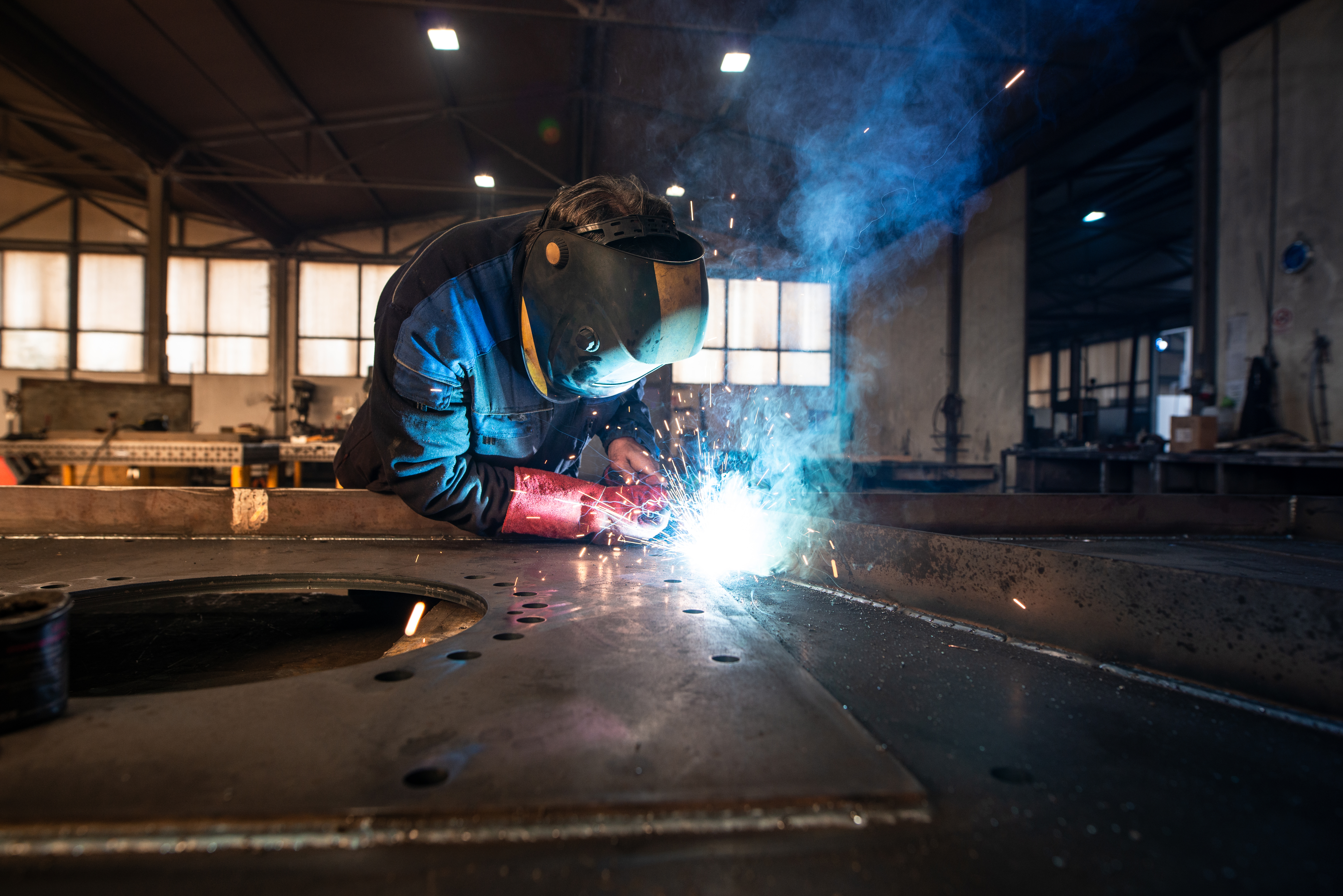We often hear about welding fumes in industry, but what are they and why are they dangerous?
Welding fumes are a complex mixture of metals, the composition of which varies depending on the base metal being processed, any coatings and filler materials present, and the temperatures used in welding operations. These fumes are in fact the result of a thermal process that gives rise to a plume of suspended particles; when this cools, the particles are released into the air and can be inhaled by operators on site.
Depending on the welding methods used, fumes with different amounts and concentrations of pollutants can be generated, but the main ones, and the most hazardous to human health, are:
- Hexavalent chromium
- Manganese
- Nickel
- lead
- Cadmium
- iron
- Copper
- Zinc
- Tin
- Aluminium
- Nitrogen oxides
- Carbon monoxide
- Ozone.
It is not only the type of pollutant that affects toxicity, but also the size of the particles. The smaller the particles, the more dangerous they are, as their smaller size makes it more difficult to purify them on the one hand and, on the other hand, they are easier for humans to inhale, thus providing easier access to the lungs.
Why are welding fumes dangerous?
As mentioned, these fumes are a risk to humans as they can have harmful effects. Long-term exposure can cause acute and chronic diseases of various kinds. These include irritation of the throat, eyes, ears and nose, which can lead to coughing, breathlessness, loss of appetite, nausea, spasms, fever, bronchitis and pneumonia, as well as more serious and chronic illnesses involving the lungs, asthma, emphysema, silicosis, pneumoconiosis, rhinitis, skin and mucous membrane damage, and involvement of the central nervous and digestive systems, and even the development of carcinogenic forms. In 2017, the International Agency for Research on Cancer ruled that there is sufficient evidence to confirm that the effects of welding fumes on humans can lead to ocular melanoma and lung cancer.
This makes it clear that action is needed to reduce the incidence of welding fumes in the workplace to a very low level. The solution is therefore to design special ventilation, suction and filtration systems, with the aim of purifying the air, making the presence of pollutants within the limits set by current regulations. This, of course, means greater safety for workers, who will see their health and safety protected.
In addition to investing in filtration and extraction systems, it is also important to focus on raising the awareness of workers, informing them and making them aware of the risks to which they could be exposed if they do not use the right individual protection measures. It is only by working with appropriate PPE and high-performance, specific air filtration systems that their health will be truly protected and safe.



